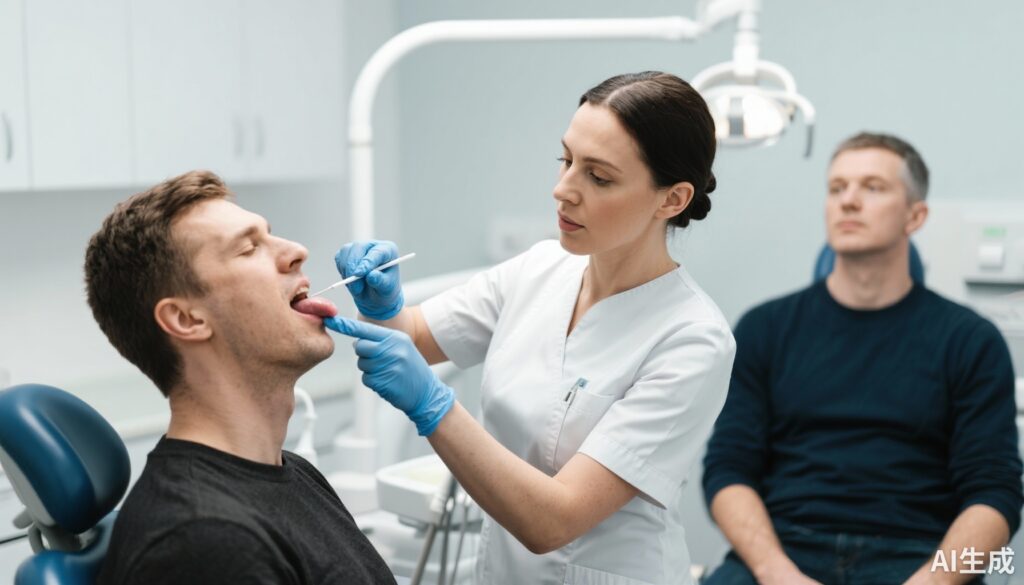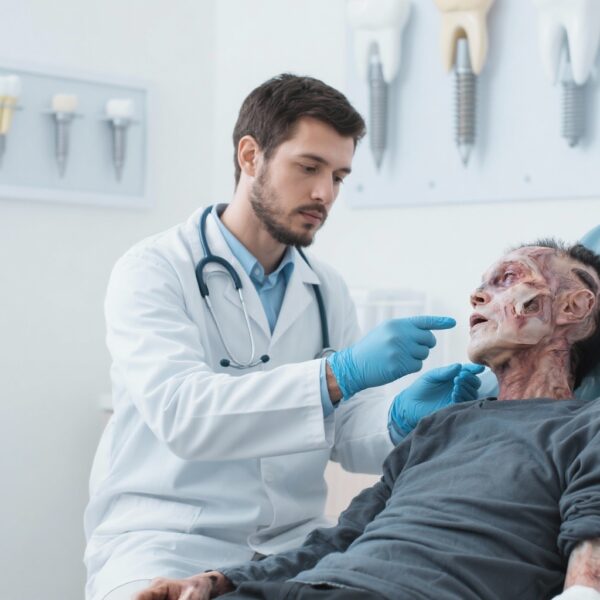Introduction
Oral cancer, particularly affecting the tongue, can significantly impair critical oral functions such as speech, eating, and swallowing, thereby degrading quality of life. Postoperative rehabilitation aims to restore these functions, yet evidence regarding the long-term efficacy of such interventions remains limited. The referenced study by Lin et al. (2025) critically evaluates the impact of an oral rehabilitation program on oral diadochokinetic (DDK), tongue pressure, and mouth opening in male patients with and without tongue cancer over a 6-month period.
Background and Clinical Significance
Oral functions like articulation, mastication, and swallowing rely heavily on the strength, coordination, and mobility of oral and lingual musculature. Tongue cancer often results in structural and functional deficits that hinder these processes. Persisting oral dysfunction can lead to malnutrition, aspiration pneumonia, and social withdrawal, underscoring the necessity of effective rehabilitation. Despite the recognized importance of restorative exercises, there remains a need for evidence on their sustained benefits, especially in differentiating responses between patients with and without tongue cancer.
Study Design and Methodology
Lin et al. conducted a longitudinal clinical trial involving male patients undergoing oral rehabilitation at a medical center. Participants included patients diagnosed with tongue cancer and those without, serving as comparative controls. All subjects participated in a comprehensive 60-minute oral exercise program supervised by a dental hygienist, focusing on oral hygiene and targeted oral exercises. During subsequent monthly follow-ups, patients were reminded to perform prescribed exercises regularly.
Assessments included measurements of oral DDK rates (/pa/, /ta/, /ka/), tongue pressure, and maximum mouth opening. Data collection occurred at baseline and at various points up to 6 months post-intervention. The analytical approach utilized linear regression with generalized estimating equations (GEE) to account for repeated measures and to compare progress between the tongue and non-tongue cancer groups.
Key Findings and Results
The study revealed notable differences in the responsiveness of oral functions between the two cohorts:
– Patients with tongue cancer exhibited significant improvement in speech-related DDK rates, with increased syllable repetition (/pa/, /ta/, /ka/) at the 6-month follow-up. Effect sizes (ES) ranged from 0.83 to 0.96, indicating large clinical effects, with p-values confirming statistical significance (p < 0.05).
– Interestingly, patients without tongue cancer demonstrated a significant increase in tongue pressure, achieving higher peak pressures post-intervention. The effect size for tongue pressure was substantial (ES = 1.15), emphasizing the program’s benefit for muscle strength in this group.
– Conversely, patients with tongue cancer showed a lower anterior tongue pressure compared to controls at 6 months, possibly reflecting persistent or progressive muscular deficits despite rehabilitation (β = -10.30, p = 0.003).
These results suggest that while the oral rehabilitation program effectively enhances speech sound articulation in tongue cancer patients, improvements in tongue strength may be more readily achieved in patients without tongue cancer.
Interpretation and Clinical Implications
The differential responses highlight the importance of tailoring rehabilitation strategies based on individual patient pathology. For tongue cancer patients, exercises that specifically target muscle strengthening and mobility could further optimize outcomes. The observed improvements in speech articulation are promising, as they directly correlate with communicative competence and quality of life.
From a clinical perspective, multimodal approaches combining exercises with adjunct therapies such as neuromuscular electrical stimulation may yield additional benefits. Regular reinforcement through follow-ups appears crucial in maintaining gains and motivating continued participation.
Limitations and Future Directions
The study’s focus on male patients limits generalizability, and further research should include females and diverse age groups. Additionally, longer follow-up periods are needed to determine the durability of gains. Incorporating patient-reported outcomes and quality of life measures would deepen understanding of functional benefits. Interventional studies combining exercise regimens with pharmacologic or technological advances are also warranted.
Conclusion
The long-term oral rehabilitation program demonstrated significant benefits in improving speech-related oral functions in patients with tongue cancer, with notable gains in DDK rates. Patients without tongue cancer experienced enhanced tongue strength, indicating a differential but complementary capacity for recovery. These findings reinforce the importance of personalized, sustained oral exercises in the multidisciplinary management of oral cancer patients to restore essential functions and improve life quality.
References
Lin PC, Wang WC, Kao YH, Matsuo K, Lin YC, Huang HL. Long-Term Effects of an Oral Rehabilitation Programme on the Oral Function of Male Patients With or Without Tongue Cancer. J Oral Rehabil. 2025 Oct;52(10):1810-1818. doi: 10.1111/joor.14043. Epub 2025 May 27. PMID: 40432294.



